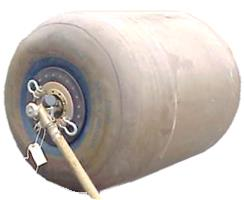
Some simple solutions include plastic boxes or bags with zip closure and silica gel bags, like the photo box that illustrates this post. Remember it is important that the box or bag is tightly sealed. In 3d printing this is essential.
Vacuum bags like those employed in storing clothes in suitcases. If you choose this method, it is best to buy good quality double zip bags, avoiding very fragile materials. Since the vacuum of these bags is not absolute, remember to include some silica gel bags.

Prioritize transparent or small-hole containers for storing silica gel beads. So you can track the humidity state of the environment through the color of the beads. Here you will find the model of a dehumidifying box to fill with silica beads and to store next to the filaments.
The filament is damp.
If you suspect that your filament has not been stored or transported properly and is damp, 3D Lopes, as well as other makers, recommend placing it in the oven. If you can, use convection oven that keeps the air circulating. Remember to keep the temperature at a maximum of 50 ° C expert recommend using a specific oven thermometer to avoid damaging the filament.
Preserving filaments for 3D printing is not as difficult as it sounds. You only need a good, dry, shady storage place. It’s important to remember that loose ends are an invitation to tangles, so stay tuned.
Fascinating, 3D printing allows anyone to become a maker and materialize their dreams and ideas. However, some parts require little more than simple modeling and printing. They require a more professional and refined finish, with no visible shavings or layers. A question that often arises is how to treat parts after printing.
There are several methods for treating printed parts, including professionals. However, this article is devoted to methodologies that can be applied even by less experienced makers. Read here how to treat parts after printing.
The better the object prints, the easier it is to handle. Therefore, take some care when printing the part:
- If possible, make the print layers thinner. This will require less work to smooth them out and the part will be more detailed. Also, if it is in the plans to paint the piece, thinner layers receive the paint better.
- Print speed is also part of the quality of the part. In general, it is recommended that objects with less detail print faster. Very detailed parts should be printed at a slower speed.
- Print sturdy objects that withstand sandpaper pressure. Thus, increase the thickness of the carcass so that the sandpaper does not harm the part.
- Better quality filaments support better actions to soften the part. Give them a priority.
How to fill pieces
Before sanding the part, you can make it softer by filling in small flaws or cracks. This can be done with a specific resin solution for this use. Use a brush and apply a thin layer of resin to the piece. Wait for it to dry if you want to apply another layer. If the filling gets a little rough, don’t worry. The resin can be sanded after drying. The better the finish, the less you need to sand. So stop being lazy. Be capricious.














